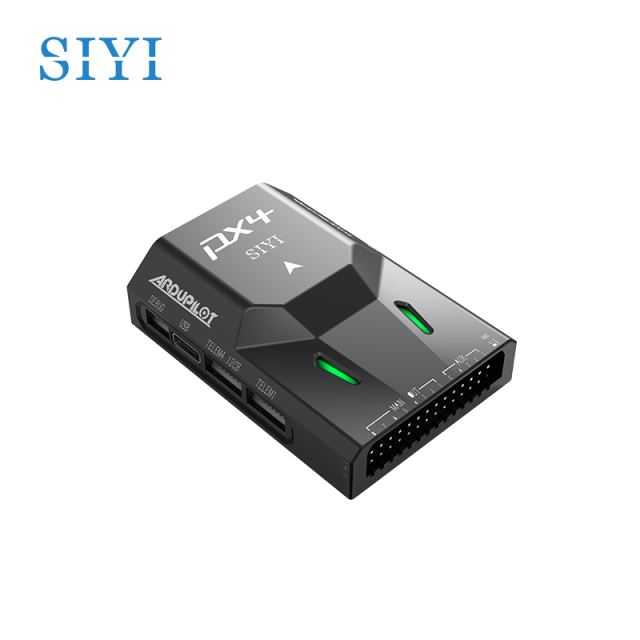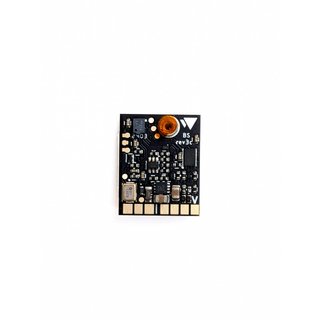Recognizing the Important Attributes and Functions of a Drone Flight Controller for Optimal Aerial Performance
The flight controller acts as the crucial component in a drone's design, coordinating its movements and making sure security via an innovative interaction of data and sensing units processing. Understanding the crucial attributes and functions of these controllers is vital for taking full advantage of aerial efficiency, as they dictate not only navigational precision however additionally total safety and integrity. With innovations in technology, the landscape of trip controllers is rapidly developing, triggering a better assessment of what genuinely specifies ideal functionality in this crucial system. What implications do these growths hold for both fanatics and experts in the field?
Review of Trip Controllers
When exploring the globe of drone technology, comprehending flight controllers is important for both enthusiasts and professionals alike. Trip controllers act as the mind of the drone, orchestrating its activities and guaranteeing stability throughout trip (SparkNavi drone flight controller and GNSS/INS made in taiwan). They process information from various sensing units, including barometers, gyroscopes, and accelerometers, to preserve balance and reply to pilot inputs successfully
The architecture of trip controllers can vary dramatically, ranging from standard variations designed for entry-level drones to advanced systems outfitted with innovative functions for specialist applications. The integration of GPS capabilities makes it possible for exact navigation and positioning, while programmable firmware enables customers to tailor trip characteristics to fit their specific needs.
Furthermore, trip controllers are essential in promoting communication in between the drone and the remote control, making it possible for real-time changes and telemetry data transmission. Comprehending the various kinds of trip controllers, including multi-rotor, fixed-wing, and crossbreed systems, is essential for picking the ideal model for a provided application. Eventually, a thorough grasp of trip controllers not just boosts the flying experience yet additionally makes the most of the performance and safety of drone operations.
Key Functions of Flight Controllers
Trip controllers play a critical function in managing a drone's flight dynamics by carrying out numerous crucial features that make sure security and responsiveness. Among the primary features is the stabilization of the drone's positioning and elevation. This is attained with the integration of various sensors, consisting of gyroscopes, measures, and accelerometers, which constantly keep an eye on the drone's setting and activity.
.png)
An additional crucial feature is the handling of control inputs from the pilot or autonomous systems. The trip controller analyzes these inputs and adjusts the drone's motor speeds accordingly to achieve the wanted flight course. This consists of handling roll, yaw, and pitch, which are critical for ability to move.
Additionally, flight controllers are geared up with reliable mechanisms. These features are designed to react to essential scenarios, such as reduced battery degrees or loss of signal, by initiating predefined actions like returning to the launch point or hovering in position.

Crucial Attributes to Take Into Consideration
When picking a drone trip controller to make certain ideal performance and integrity,Numerous vital attributes ought to be taken into account. One essential aspect is the controller's processing power, which determines its ability to handle intricate flight algorithms and real-time information handling. A higher handling capability improves responsiveness and stability throughout flight.
An additional essential attribute is the number of sustained flight modes. A versatile trip controller ought to supply numerous modes, including acro, altitude hold, and GPS-assisted settings, catering to various pilot skill levels and functional scenarios. In addition, the existence of integrated safety and security attributes, such as fail-safes and geofencing, can significantly boost operational safety.
Compatibility with different communication methods is likewise vital, as it makes sure smooth combination with various other gadgets and peripherals, such as remote controllers click for source and telemetry systems. The controller's firmware must be straightforward and regularly updated to incorporate new features and optimizations.
Integration With Sensors and Equipments
A trip controller's performance is greatly affected by its ability to incorporate with various sensing units and systems. This combination is vital as it enables the trip controller to get real-time information essential for reliable trip administration. Trick sensing units consist of GPS, inertial dimension units (IMUs), measures, and magnetometers, each providing crucial information relating to the drone's elevation, orientation, and setting.

Furthermore, progressed flight controllers you could try here sustain assimilation with payload systems, including cams and various other sensors, enabling improved functionalities such as independent navigating and barrier evasion. This interconnectedness not only enhances the drone's functional capacities but also expands its application prospective throughout numerous markets, from airborne photography to agricultural surveillance. Hence, a well-integrated trip controller is fundamental for accomplishing ideal airborne efficiency and making sure the dependability of drone procedures.
Tips for Optimizing Performance
To make best use of the efficiency of your drone, several vital approaches can be used that emphasis on enhancing both hardware and software application components. Guarantee that the flight controller firmware is up to day.
Following, calibrate your sensing units, including the accelerometer and gyroscope, to make sure exact readings. Correct calibration minimizes drift and enhances flight security, especially during facility maneuvers. Additionally, take into consideration upgrading the hardware components, such as motors and props, to enhance thrust and performance. High-grade props can decrease drag and boost trip time.
Tweak your flight setups, including PID (Proportional, Essential, Derivative) values, to attain smooth and receptive handling. By implementing these approaches, drone drivers can considerably enhance airborne performance, leading to a more effective and pleasurable flying experience.
Conclusion
To conclude, an extensive understanding of drone flight controllers is imperative for boosting airborne performance. The assimilation of essential attributes and crucial functions, consisting why not try this out of handling power and safety devices, directly affects the stability and ability to move of drones. Additionally, reliable communication with numerous sensors and systems plays an essential duty in accomplishing precise navigating and operational performance. By focusing on these elements, operators can dramatically elevate the efficiency and reliability of their drone systems in varied applications.
Trip controllers serve as the brain of the drone, managing its activities and ensuring stability during trip.Trip controllers play a crucial role in managing a drone's flight characteristics by carrying out numerous key functions that make sure security and responsiveness. The trip controller analyzes these inputs and adjusts the drone's motor speeds accordingly to accomplish the preferred flight path.Various necessary features should be taken into account when choosing a drone trip controller to make sure optimal performance and reliability. Thus, a well-integrated flight controller is fundamental for achieving optimal aerial performance and ensuring the reliability of drone operations.